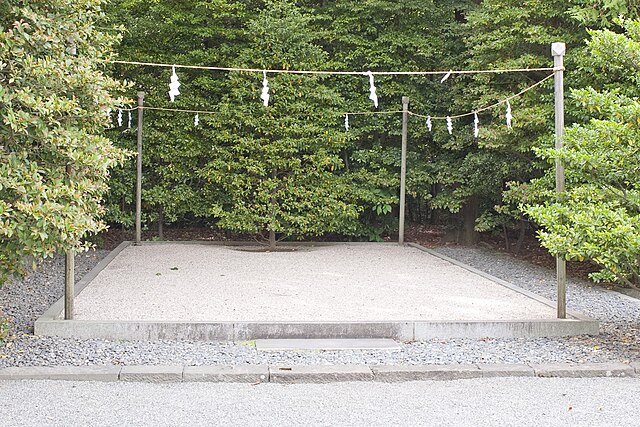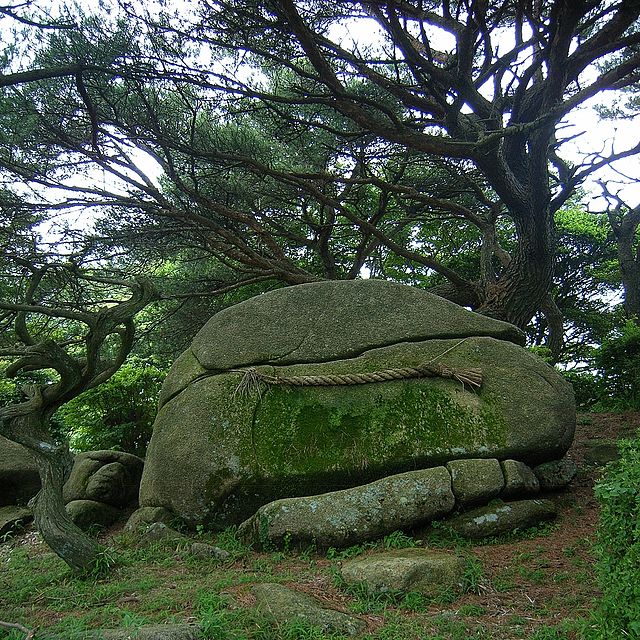Loading AI tools
Shinto worship space From Wikipedia, the free encyclopedia
Himorogi (神籬, lit. "divine fence") in Shinto terminology are sacred spaces or altars used to worship.[1] In their simplest form, they are square areas with green bamboo or sakaki at the corners without architecture. These in turn support sacred ropes (shimenawa) decorated with streamers called shide.[1] A branch of sakaki or some other evergreen at the center acts as a yorishiro, a physical representation of the presence of the kami, a being which is in itself incorporeal.[1][2]



During the Aoi Festival in Kyoto the himorogi is a square space surrounded by green branches with an evergreen tree at the center as a yorishiro.[1] A more elaborate himorogi can also be made with a straw mat on the ground with on it a ceremonial 8-legged stand called an hassoku-an (八足案, eight leg an) decorated with shimenawa and sacred emblems.[1]
The etymology of the word is unclear, but it appears already in the Nihon Shoki and in the Man'yōshū.[1] The term "himorogi" refers equally to the focal point "tree" and to the sacred space, both of which are deemed to be purified or "unpolluted".[3]
Himorogi in Japan are most commonly seen at construction sites, where after use they stand for a while before actual work begins. They are built for a Shinto priest, who comes to bless the site during a ground-breaking ceremony called jichinsai (地鎮祭)
Seamless Wikipedia browsing. On steroids.
Every time you click a link to Wikipedia, Wiktionary or Wikiquote in your browser's search results, it will show the modern Wikiwand interface.
Wikiwand extension is a five stars, simple, with minimum permission required to keep your browsing private, safe and transparent.